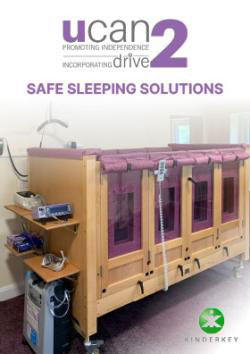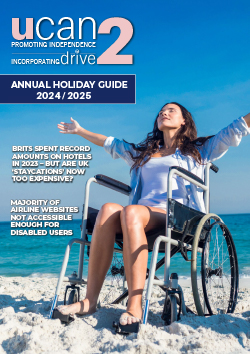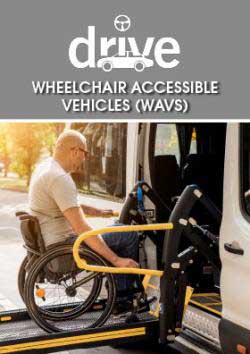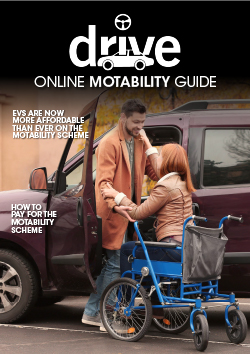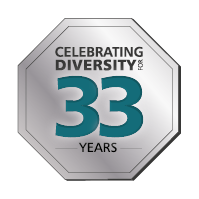In an increasingly digital and remote working environment, a leading employee benefits company has designed a guide to help employers focus on disability inclusion.
Ben – an all-in-one platform for any company to personalise benefits and rewards – has published an online guide that explores the key aspects of disability in the workplace in depth. By making disability inclusion a priority, businesses can help drive motivation, engagement, and talent retention at work.
About 19% of the working age population are registered as having a disability so employers must consider inclusion or they could be accused of discrimination under the Equality Act.
Having policies and procedures in place to ensure inclusivity, even before you’ve employed anyone who has a disability, will benefit you and future candidates in the long-run, as you’ll have a better idea of how you can accommodate them.
 Disability Inclusion in the workplace
Disability Inclusion in the workplace
- Creating a more inclusive culture at work
- How to avoid unconscious bias at work
- Change the language you use
- Recruitment
- Full-time vs. part-time work
- Supporting disabled employees
- Training and communication
Creating a more inclusive culture at work
It takes time and commitment to create a more inclusive workplace culture, but it’s worth it in order to ensure all employees are comfortable, confident, and happy at work. It will also benefit your company in the long-run. Employee retention is likely to be higher if your team is happy and supported.
Identify existing unconscious bias
Unconscious bias refers to stereotypes or “prejudice in favour of or against one thing, person, or group compared with another” that someone can form outside of their own awareness.
We all have unconscious bias. Humans like to organise the world by placing everything into categories and this can lead to bias, even if it differs completely from your actual beliefs. However, if you become more aware of it, you can stop it from having an influence over your behaviour.
How to avoid unconscious bias at work
It would be wrong to become a financial crux to lean on, but finding a middle ground as a helping hand in a crisis is something totally different. Make sure to let your team know that the company will do whatever they can to help if unforeseen circumstances leave them with major money troubles. The specifics of this help can be discussed on an individual basis if such a reality ever presents itself.
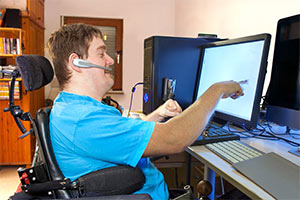
1.Question assumptions, talk about unconscious bias with your employees and co-workers, and make sure they understand what it is and why they need to avoid it.
2.Arrange unconscious bias training for your employees.
3.Advertise job roles in multiple places, so they’re more likely to be seen by a diverse group of candidates.
4.Omit some personal details off of applications, such as names, which can reveal characteristics such as gender and ethnicity.
5.Have more than one person assess CVs, so you have a range of opinions
6.Carry out initial interviews on the phone, so the interviewer(s) cannot make decisions based on physical appearance.
7.Keep a written record of why decisions are made.
Change the language you use
Language evolves over time. Previous terminology may not be considered inclusive now, so it’s worth understanding why it’s fallen out of favour, as well as checking what is acceptable today. It’s also important to note that there’s never going to be a universal agreement on what’s right and what’s not. The disabled community may have differing views on some terms. Always ask a disabled employee what they prefer, and be willing to update your vocabulary as language shifts. Doing so will help to create a more welcoming working environment.
Disabled person / person with a disability
There is some debate regarding which term is better: disabled person, or person with a disability. There are arguments for and against both terms.
Some people would prefer to refer to themselves as “disabled”, as they are disabled by the world when accessibility has not been thoroughly considered. Others would prefer “person with a disability”, as this implies they are an individual who happens to have a medical condition.
You may also have come across the term “differently abled”, but some people find this patronising as it’s a euphemism.
The most important thing is to ask someone what terminology they’d prefer, and then respect that choice and educate the rest of the company to do the same.
Collective language
“Disabled people” or “people with disabilities” are the preferred terms for a group of disabled people, rather than referring to them as a collective (“the disabled”). This is because the word “disabled” is an adjective, not a word for a group.
 Wheelchair user (s)
Wheelchair user (s)
“Wheelchair user(s)” is preferred over “wheelchair-bound”, which implies that the person can’t leave their wheelchair. This is inaccurate, as anyone who uses a wheelchair will leave it to do things like use the toilet or go to bed. Some wheelchair users may only need to use it some of the time, and may choose to walk if they are able to. The word “bound” also has negative connotations of being trapped, when in fact a wheelchair is valuable and allows the user to live their life.
Positive vs. negative language
Avoid patronising comments (“You’re doing so well”, “You’re a hero”, “You’re an inspiration”), or negative language (“What’s wrong with you?” “They suffer from XYZ”). Both could be considered rude and unnecessary, and they may suggest victimhood.
The government has some additional guidelines about which language to avoid.
Recruitment
Job posts
Consider using other methods in addition to your usual recruitment sites or agencies. Reach out to non-profit organisations, employment programs for people with disabilities, and local universities or colleges, or hire a recruitment agency that supports people with disabilities. This will widen the net when you’re looking for new employees.
Information in your job advertisement should include benefits that appeal to marginalised groups. For example, flexible working hours and being able to work from home will appeal to individuals with disabilities, as well as people with young families or caring responsibilities.
You could also add a statement encouraging individuals with disabilities to apply, and note that reasonable adjustments can be made. As defined by Acas, reasonable adjustments are changes to remove or reduce the effect of an employee or candidate’s disability so they can carry out or apply for a job.
Keep language simple, clear, and gender-neutral, and avoid using jargon wherever possible. Jargon can exclude people who have the skills needed for the job, but aren’t aware of any industry-specific language yet.
Accessibility considerations should exist before you’ve even hired someone. Make sure job ads and application methods are available in accessible formats. Interview and testing locations should be accessible too.
Interviews
Every candidate will need to know about the interview process well in advance. This gives people with disabilities time to ask for reasonable adjustments, such as extra time to complete a task, or a sign language interpreter. It’s also important to remember that not all disabilities can be seen. Give every applicant and new hire the opportunity to inform you of their needs.
Treat candidates the same as you would anyone else during the interview. Ask about their knowledge, skills, and enthusiasm for the job role they’re applying for. Avoid asking questions about their disability – these can be asked once an offer has been made and you need to adapt according to their needs
Full-time vs. part-time work
34.1% of disabled people work part-time, compared to 23.1% of non-disabled people. Some people may be able to work, but not full-time hours because of their disability, so a part-time job is a great solution.
Part-time employees shoulder get the same treatment as full-time workers for the following:
- Career breaks
- Holidays
- Maternity, paternity and adoption leave and pay
- Pay rates
- Pensions
- Promotion, transfer and redundancy
- Sick pay
- Training and career development
Some of these benefits can be applied pro rata, which refers to the proportion of hours worked. For example, if a full-time employee is given a bonus at the end of the year, a part-time employee may receive half of that amount.
Supporting disabled employees
It’s not enough to broaden your recruitment strategy in order to attract disabled employees. You also need to provide support for them after they’ve been hired. Inclusion isn’t a box-ticking exercise.
Onboarding
Once you’ve congratulated your newest employee on getting the role, talk should turn to how you can make the transition to working for your company as simple and stress-free as possible. Ask them which reasonable adjustments will need to be made. A disabled employee may need additional technology to do their job, such as a screen reader or specific type of keyboard, and they may need to work flexible hours, or from home.
Improve workplace design and accessibility
Some straightforward changes can make a considerable difference to the working environment for a person with disabilities.
- Widening doorways and other entrances
- Providing ramps for wheelchair users
- Providing larger computer screens
- Making sure plug sockets are safely in reach
- Providing assistive technology, such as screen readers, magnifiers, and keyboards
- Clearing trip hazards out of the way
Don’t be afraid to ask existing disabled employees or new starters which changes would make their working day more seamless. They may raise an issue you hadn’t thought of.
Flexible working
As defined by the charity Scope, flexible working is “a way of working that suits an employee’s needs.”
Flexible working has become more commonplace in the last few years in industries where it is possible. There are a number of benefits, which we’ll explore below.
1.It allows employees to look after health conditions (including disabilities).
Whether that’s through being able to attend weekday doctors appointments or manage pain safely at home, flexible working means healthcare isn’t restricted.
2.It increases productivity
Employees are able to work when they are at their most alert and motivated, improving both quality and volume of work.
3.It can reduce stress by providing a better work-life balance
Employees don’t have to stick to a rigid 9-to-5 schedule and, as noted above, are more likely to be able to deal with their workloads effectively.
“It’s in no one’s interests to have overstretched workforces,” confirms TUC secretary general Frances Grady. “People who experience high anxiety are less productive and are more likely to take time off.”
4.It is easier to hire and retain employees
More and more people expect some form of flexible working as standard when searching for jobs. Lack of flexibility has even been cited as one of the triggers of what’s being referred to as The Great Resignation.
Training and communication
Your non-disabled employees should be aware of the steps you’re taking towards disability inclusion, why they’re important, and what they can do to accommodate disabled members of the team. Clear communication needs to come from the top down, setting the tone for all employees. This will help everyone feel enthusiastic and lend their support.
It is also worth getting feedback, as the responses may draw your attention to issues you weren’t aware of and help you plan accordingly.
Additionally, training can go a long way in helping employees – with or without disabilities – understand the challenges faced by their disabled co-workers. It can also equip them with the knowledge and tools to solve any issues related to disability in the workplace, which means the responsibility won’t only fall on the disabled person.
Conclusion
There’s a lot that employers can do to be more inclusive in the workplace, from providing unconscious bias training to improving office accessibility. It will require some additional work and a willingness to change some policies and practices, but results in more employment opportunities for disabled people and overall a more happy, supported and loyal team in the long-run.
Read the full guide here https://www.thanksben.com/the-definitive-guide-to-disability-inclusion-in-the-workplace








